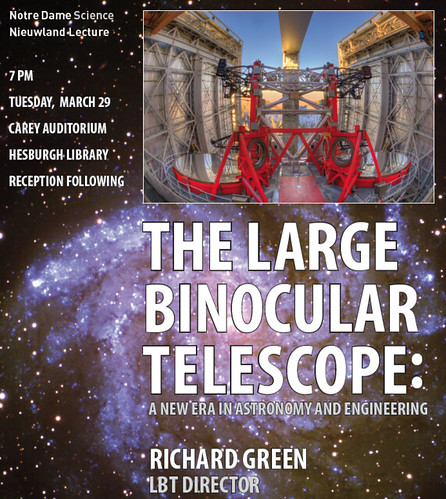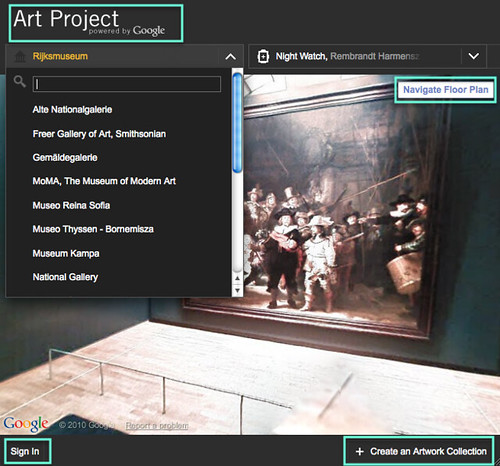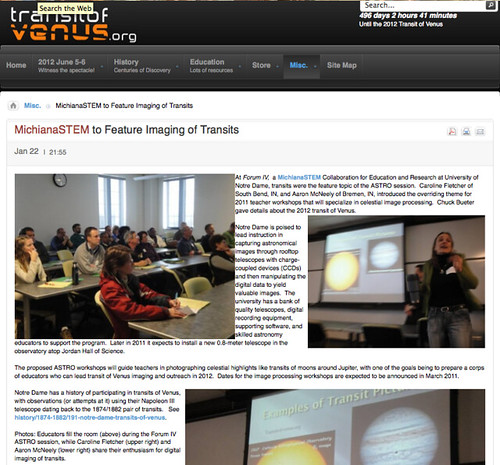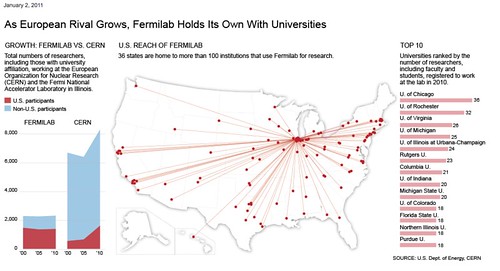Earlier today I had the pleasure of spending the day with ten dozen (or so) STEM educators, mostly K-12 teachers but many graduate students and university faculty, at the 4th annual Collaborating for Research and Education Forum. I was tasked with giving a rationale and overview of the Forum’s activities (linked above) and during that brief talk I made a case for blogging to build STEM community in Michiana.
That case goes something like this: to build an effective craft of inviting students in as participants and supporters of the STEM disciplines, we need a stable community which works together over a long period of time. Both to hold that community together and to transmit its crafts–both crafts of the STEM disciplines themselves and the supporting craft of effectively inviting students to maturity in those disciplines–the community needs a rich culture. Culture makes things that are good, seem good. Human beings build culture, intentionally or otherwise, because the experience gathered by a community outstrips the capacity of its new members to experience it for themselves. We put books in our libraries which we think are good for our children. We can’t explain to them, yet, all the criteria we use, or compare the ones that got in with the ones we left out. We just pick good books, and our children–if they live in a rich culture–are surrounded by good choices. We hear a lot about cultural literacy; this is literacy culture, introduced as an analogy. We need a rich STEM culture, if we’re going to have a thriving STEM community. And it is a lot like a good library.
Recently I had an enjoyable 90 minute conversation with a physical therapist friend of mine as we drove back from Chicago’s Midway Airport. As we exchanged stories about our livelihoods, she described how her mom (an RN) and dad (an engineer) build a home life full of conversation about science, technology, mathematics. She grew up surrounded by opportunities to get connected with the STEM disciplines, and most everything around her pointed her in the same direction. She was free to choose–from many lives in front of her like books on a shelf–but science, engineering, and mathematics were just so important and interesting! We agreed, as we theorized about it, that she was surrounded by a broad spectrum of opportunities to engage the STEM disciplines, supported by a rich STEM culture.
What STEM professionals need to produce in Michiana is just such a broad spectrum of opportunities for students to engage the STEM community, and a rich STEM culture supporting those interactions. Students need to be surrounded by opportunities to choose one important and interesting avenue of STEM engagement, after another. They need to get to know a great many people in the STEM disciplines, and choose to be like them, freely, in ways that match up with their emerging interests and aptitudes. But STEM practitioners are in short supply; their time is precious; and their surface area is limited, sometimes much more so than it needs to be. So our job is to expose them, to help make them available, ubiquitous, exemplary, interesting, welcoming, imitable, encouraging, and all the while productive in the STEM disciplines. That’s the sort of STEM culture we need: good examples everywhere for everyone. Everything points in the same direction, making all the riches of the pursuit of the STEM disciplines seem to be rewarding in ways that imitate and lead to the full rewards of living a life of success in learning. There are of course other dimensions of enjoyable life than learning and other dimensions to learning other than the STEM disciplines. But perhaps no where else than in the STEM disciplines could so many agree so about so much good to be done for so many. We agree in large measure about what constitutes advancement in the STEM disciplines, and we agree that for a wide variety of reasons it would be good for all of Michiana were our children advancing in them.
So why blogs? Because they increase surface area, efficiently, of our STEM professionals. They aren’t enough, all by themselves. But especially when coupled with some exciting face-to-face interactions, blogs are efficient means of sharing experiences. A trip to the Large Binocular Telescope (LBT) in Arizona would be cool on almost anyone’s list, but it’s expensive to travel there and space is limited. (It’s LARGE: be patient scrolling through the image Kate Rueff took, below.

Listening to Kate’s excitement about traveling to and working at the LBT isn’t quite as good as going yourself. But if Kate has the LBT contact, with students and teachers getting perhaps a little Kate face-to-face contact through an ASTRO collaboration experience, but much more contact in her periodic blogs describing her interactions with the LBT, then students get much more substantial contact with both the LBT and with Kate. Through blogging the whole experience grows, and the surface area both of Kate and of the LBT increases. The blog becomes a cultural thread: astronomy is good, and the blog makes it look good.
Moreover, Kate blogs not while in the middle of writing code for the LBT’s active optics, but in her less expensive down-time. Teachers can share Kate’s blog with students when doing so would be a refreshing change of pace, rather than a tax on their studies. Multiply this experience across many students and teachers, many STEM bloggers, many times, and the whole prospect of life involved with science and engineering seems brighter.
So where do we start? Those who can, blog. Those who can, subscribe to blogs, so that each opportunity for contact is closer at hand, a click in the mailbox you were going to visit anyway. Let the email text bait you, and if you’ve got a moment for it, click to visit the blog, adding images and video to the experience. Then touch the “like” button ( ) at the bottom of the blog: say that you’ve been there. This is the beginning of a dialogue, and it takes almost no time at all. It lets the author know you’re there.
) at the bottom of the blog: say that you’ve been there. This is the beginning of a dialogue, and it takes almost no time at all. It lets the author know you’re there.
On a good day when you have more time and a particular interest, post a comment. (The first time you post, wait for the comment to be approved; thereafter all of your comments will be added immediately.) Consider sharing the post with a colleague or friend, using the “AddThis” ( ) button at the bottom of each blog. Or you could just forward the notification that came to you by email. If you’re a teacher, take a moment to read some interesting blog post together in class. (They’re almost all much shorter than this one:) Consider posting a comment from your class. Students enjoy interacting online with scientists and engineers, or with teachers in other classrooms. Or with students from other schools, through comments posted by their teachers. Comments are all filtered and moderated.
) button at the bottom of each blog. Or you could just forward the notification that came to you by email. If you’re a teacher, take a moment to read some interesting blog post together in class. (They’re almost all much shorter than this one:) Consider posting a comment from your class. Students enjoy interacting online with scientists and engineers, or with teachers in other classrooms. Or with students from other schools, through comments posted by their teachers. Comments are all filtered and moderated.
Taking a step further, make a request (“I’d like to get a video tour of your lab”) via comment. That way you begin to shape the main content of the blog, rather than just the comments.
In the end, we’d like to ask a wide range of people to blog. This could be you. To begin, email a guest post to one of the authors. If this is something you enjoy doing, it might make sense to set you up an account as an author. If you already blog, consider sending something in right away.
These blog posts are threads that draw together the fabric of STEM culture. That’s the theory. Truth be told, blogging to build STEM community is a social experiment. Let’s try it.





